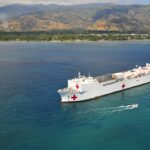Hospital ships: what are they doing in Gaza and do Ukraine need them?

Hospital ships become relevant during major wars. They saved soldiers and civilians in the 19th century, during the First and Second World Wars, etc. Unfortunately, they have to be mentioned now as well.
USM explains the role of hospital ships in wars, mentions the humanitarian disaster in the Middle East and considers whether Ukraine needs such ships.
A hospital ship is a hospital on the water. Most often, such ships are used by the naval forces of various countries to be able to resuscitate the wounded near the combat actions zones.
Large warships have their own hospitals on board, most often these are aircraft carriers and amphibious assault ships. But, despite the presence of a “hospital”, the ship does not become a hospital and is not protected from enemy attacks.
The Second Geneva Convention prohibits attacking hospital ships that meet specific requirements. However, the warring parties have the right to inspect the ships, as well as to take prisoners (not personnel).
Compared to other types of medical transport, hospital ships can accommodate a larger number of people in need of medical assistance. In addition, such a vessel can be in waters far from the coast for a long time.
A bit of history
The history of hospital ships probably dates back to ancient times. For example, the Athenian fleet had a similar vessel, the Therapia, and the Roman fleet, the Aesculapius. But one can only guess about the medical purpose of these vessels, based on their names.
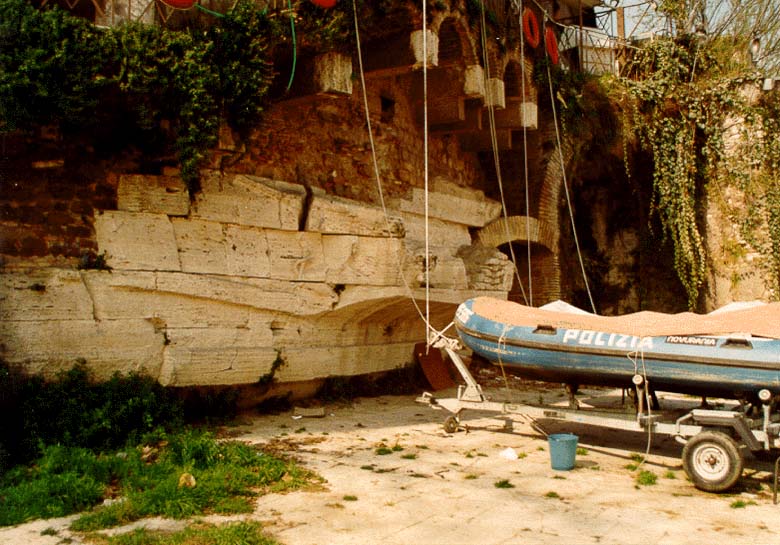
The remains of the ship Aesculapius in the southeast of the island of Tiberina, Italy.
The first British hospital ship may have been the Goodwill, which accompanied a squadron of the Royal Navy in the Mediterranean as early as 1608.
In addition to the crew, the floating hospitals of the 17th century housed a surgeon and several of his assistants. Usually, doctors only had bandages, soap, needles, and suppositories at their disposal. These first medical vessels were intended to care for the sick, not the wounded. Over time, the number of medical personnel on such ships increased, and they themselves received the function of a quarantine zone – for example, during the “heyday” of the plague.
The Royal Navy institutionalized the use of hospital ships in the first half of the 19th century. The modern hospital ship appeared during the Crimean War, in the 1850s. The only military hospital available to British troops fighting in the war was near the Bosphorus. During the siege of Sevastopol, almost 15,000 wounded were brought there from the port in Balaklava by a squadron of converted hospital ships.
Real medical equipment appeared on the steamships HMS Melbourne and HMS Mauritius. They were manned by the Medical Staff Corps and provided services to the British expedition to China in 1860. The ships had plenty of space to accommodate patients and were equipped with operating rooms. Another early hospital was the USS Red Rover in the 1860s, which served wounded soldiers on both sides during the American Civil War.
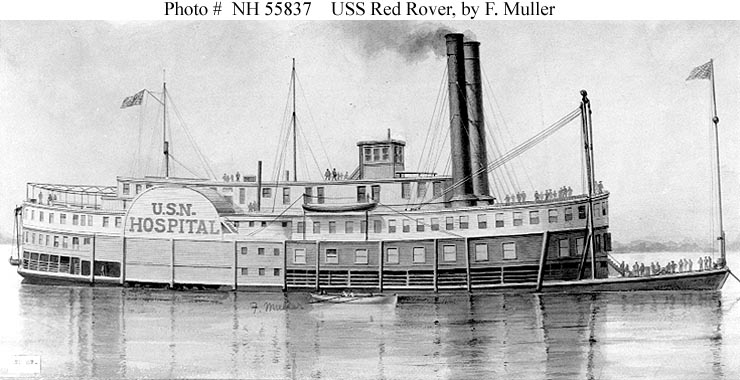
USS Red Rover
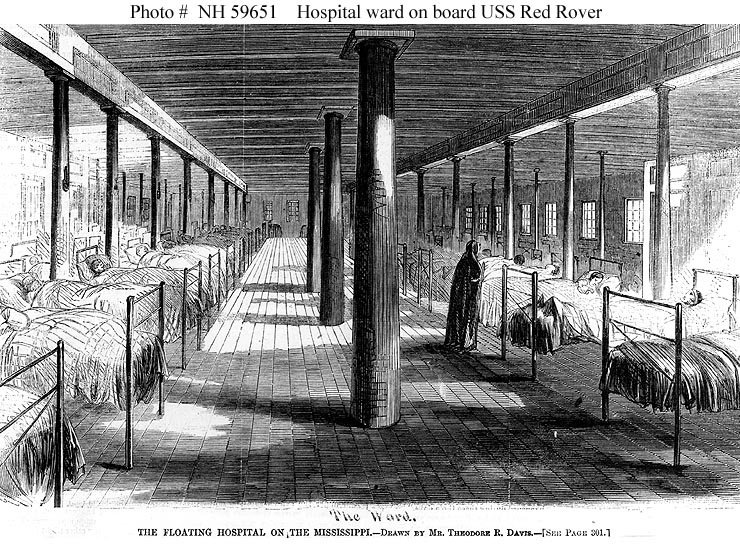
Hospital ward on the USS Red Rover
In 1883, during an outbreak of smallpox in London, the authorities acquired the ships HMS Atlas and HMS Endymion, as well as the steamer PS Castalia. The vessels were based on the Thames at Long Reach, and remained in service until 1903.
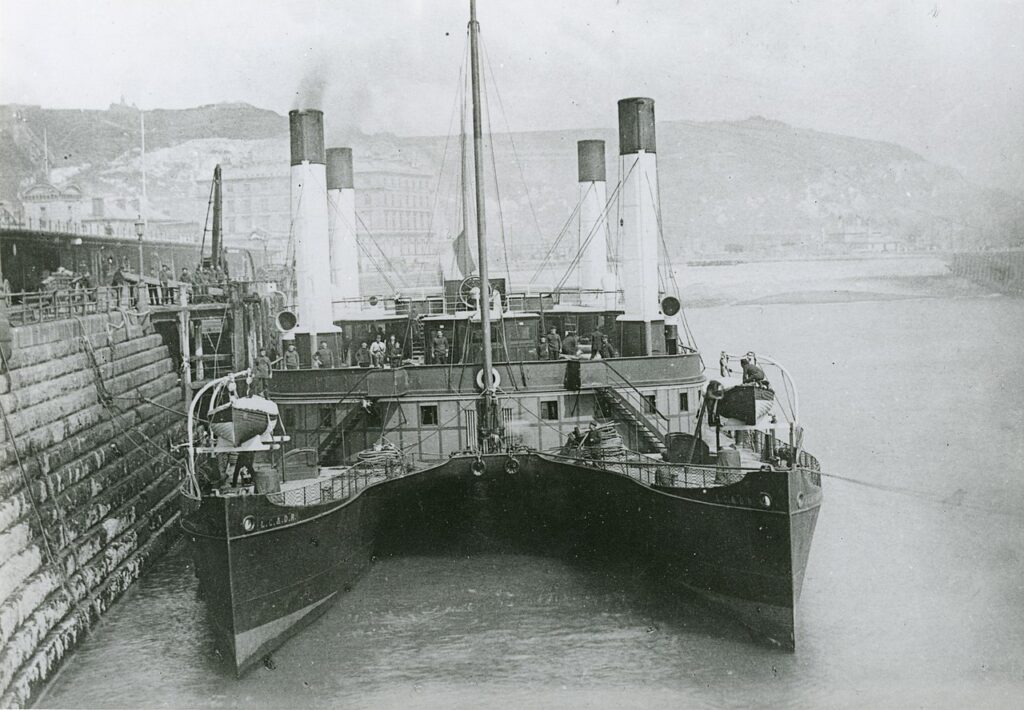
Steamship Castalia in Dover, 1881
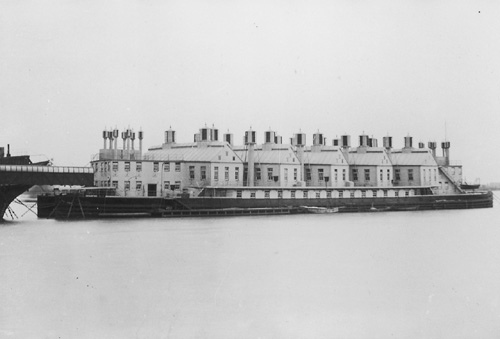
Castalia, converted into a hospital ship
The Russian Empire had more than 20 hospital ships in its fleet. Among them is the Tsaritsa steamship bought from Great Britain. The ship’s home port was Odesa, and the Sisters of Mercy from Chernihiv worked on board.
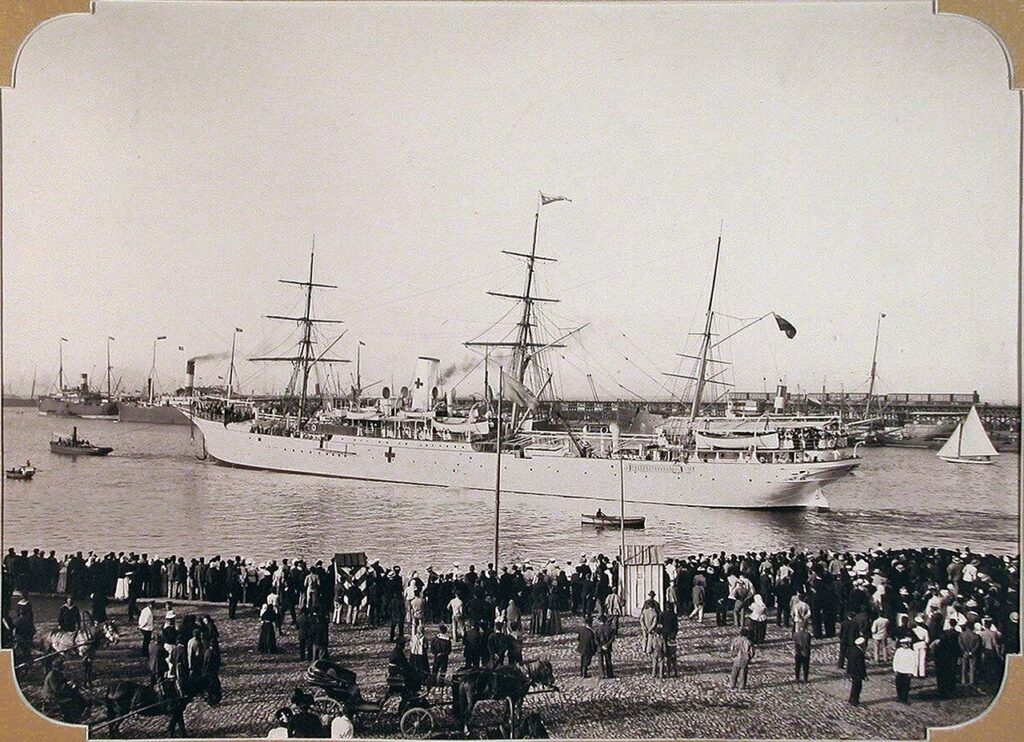
Hospital ship “Tsarytsa”, Odesa, August 26, 1900
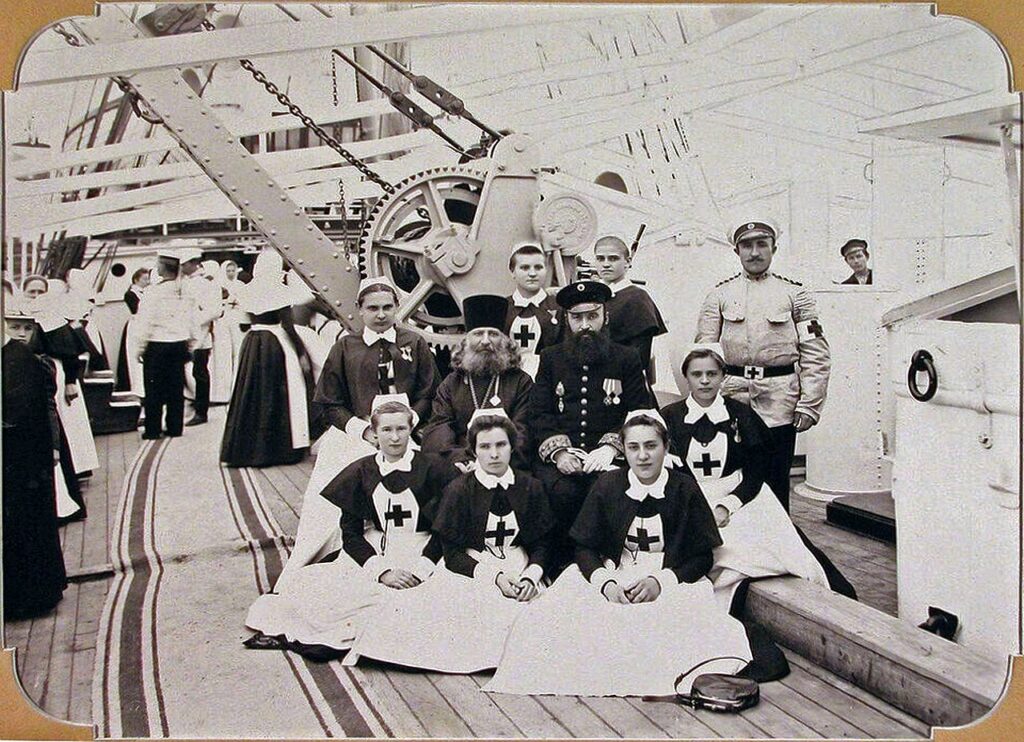
Detachment of the Sisters of Mercy from Chernihiv on the hospital ship “Tsarytsa”, Odesa, 1900
World wars
During the First and Second World Wars, hospital ships began to be used on a large scale for the first time. Many passenger liners have been converted into hospital ships. RMS Aquitania and HMHS Britannic are two famous examples of such converted ships. By the end of the First World War, the British Royal Navy had 77 hospital ships in service. During the Dardanelles operation, hospital ships were used to evacuate more than 100,000 wounded to Egypt.

RMS Aquitania as a hospital ship, 1916
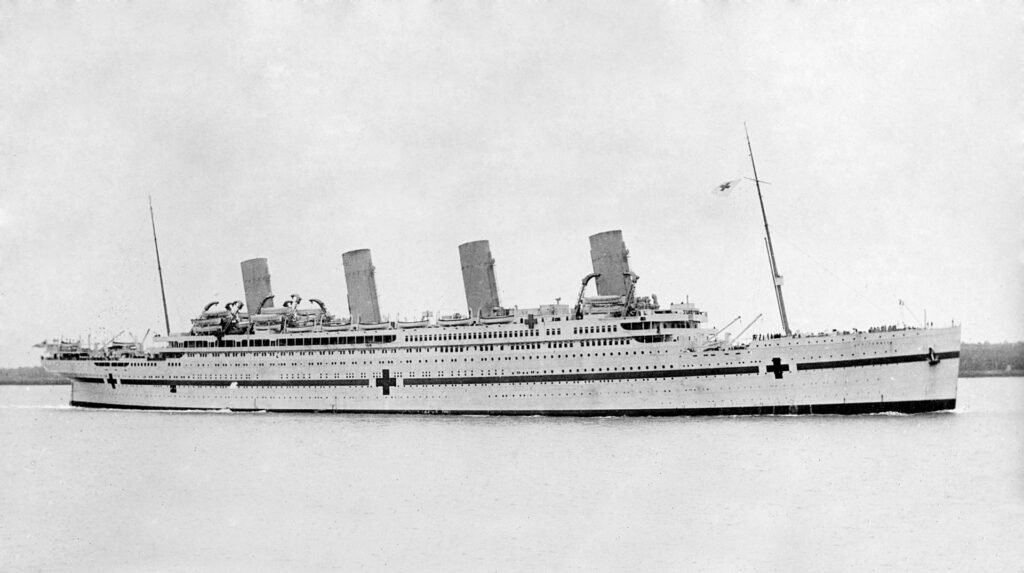
Hospital ship HMHS Britannic
By the way, after the Second World War, the British royal yacht HMY Britannia was converted so that in wartime it could perform the functions of a hospital ship. According to some claims, in the event of another war, the yacht was also intended to shelter Queen Elizabeth II from nuclear weapons.
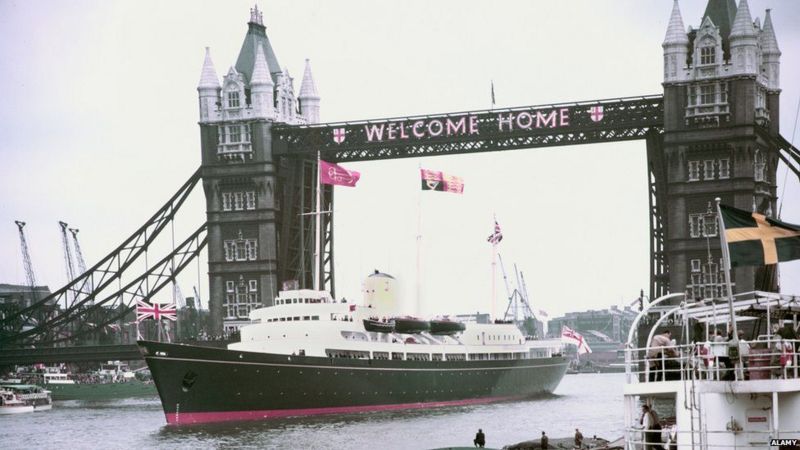
Royal yacht HMY Britannia, 1954
Civil hospital ships
Nowadays, hospital ships are still used, even in “peaceful” zones. For example, the civilian medical fleet provides assistance to the population of countries where the health care system is poorly developed. The most famous civilian hospital ship is the Africa Mercy, which is owned by the Mercy Ships charity.

Hospital ship Africa Mercy
“Mercy Ships” is a medical volunteer organization that provides services to the population of developing countries. Founded in 1978 by Donald and Diona Stevens, who in the same year purchased their first future hospital ship, the Italian cruise ship Victoria.
After conversion, the liner had three operating rooms, a hospital ward for 40 patients, a laboratory and even a dental clinic and an X-ray room. The ship became operational under the new name – Anastasis. About 350 crew members from 30 countries lived and worked in this hospital. Anastasis was in operation until 2007.
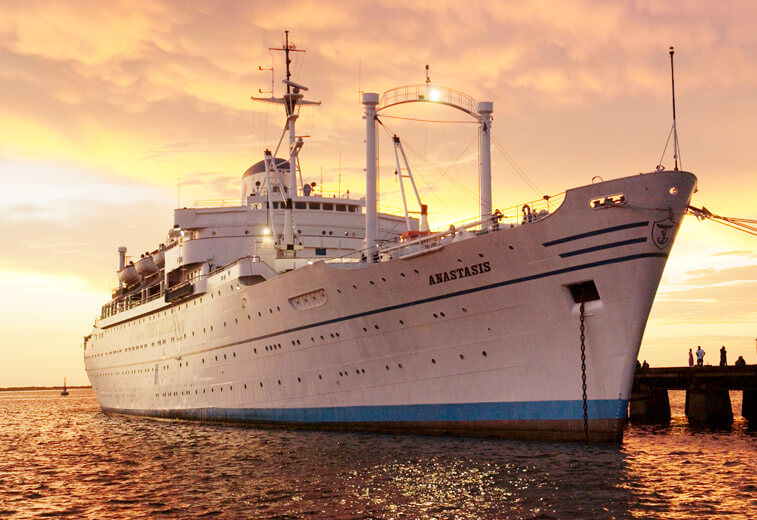
Anastasis Floating Hospital (col. Victoria)
Other ships of the organization include Good Samaritan (1983-2001), Caribbean Mercy (1994-2006), Africa Mercy (currently the largest civilian hospital ship in the world).
For the most part, Mercy Ships visit poor countries on the African continent and provide local people with free assistance, including complex surgical operations.
One of the sponsors of “Mercy Ships” is the Cruise Lines International Association (CLIA).
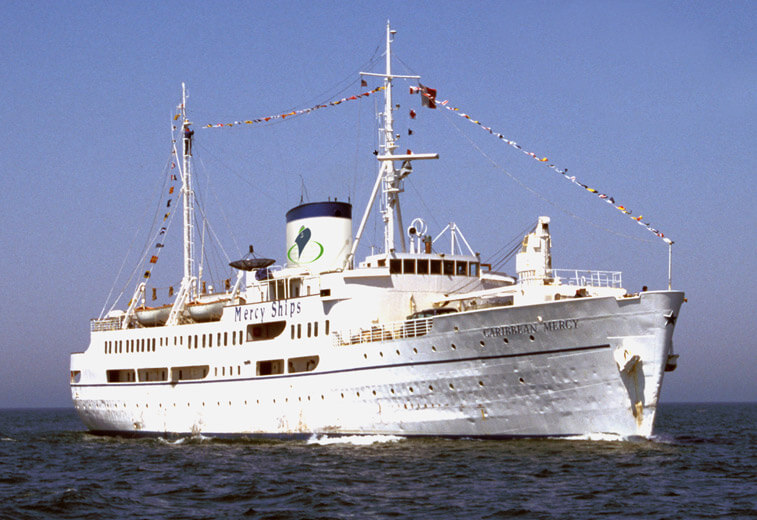
Hospital ship Caribbean Mercy
But let’s return to the primary role of hospital ships — rescuing people in war zones. Unfortunately, now, in the era of space flights and the rise of artificial intelligence, there are at least two big and brutal wars on the planet, which the whole world is discussing. Israel and Ukraine have access to the sea, but we hear about hospital ships recently only in the context of the war in the Middle East. Why does Israel use floating hospitals, but Ukraine does not? And do we need them at all?
Hospital ships: Israel, Gaza Strip
Not all Western countries are ready to openly express their support for Israel in this war. Many of them, as Ukraine has already experienced, choose to remain “in the middle” and only offer humanitarian aid to both sides of the war.
So, in the fall, a number of countries announced that they would send their hospital ships to the Gaza Strip, where fighting and a humanitarian disaster continue.
Hospitals on the coast are overcrowded and Hamas is using them as shields to prevent Israel from destroying their command and control networks, bunkers filled with fuel and ammunition, and other military logistics. With Israeli forces closing in, Hamas is required to evacuate patients from the immediate combat zone. Instead, the terrorists reportedly refuse to share a huge stockpile of medical supplies and life-saving equipment with the people they claim to represent.

One of the overcrowded hospitals in Gaza, 2023
During the regular fighting in the northern Gaza Strip, an explosion occurred in a hospital. This is one of the proofs that providing medical aid in this territory is dangerous neither for the Hamas side nor for the medics involved from third countries. In total, WHO recorded more than 130 attacks on health care facilities. Doubts about Gaza’s ability to independently treat its civilians are also caused by the neglected field of medicine. Israel has one of the most advanced health care systems in the world, but Hamas cannot boast of such.
The Gaza Strip is literally surrounded by Israel on almost all sides. There is also a border with Egypt, in particular the Rafah checkpoint, through which convoys with humanitarian aid go. However, due to military actions, convoys are delayed and restricted, so Gaza can only wait for help from the sea – in the form of ships protected by the Geneva Convention.
For example, France sent the Tonnerre landing helicopter carrier to the shores of Gaza to carry out a humanitarian mission. The hospital on the ship is designed for 69 beds and has two operating rooms. Italy also sent its hospital ship from the port of Civitavecchia.
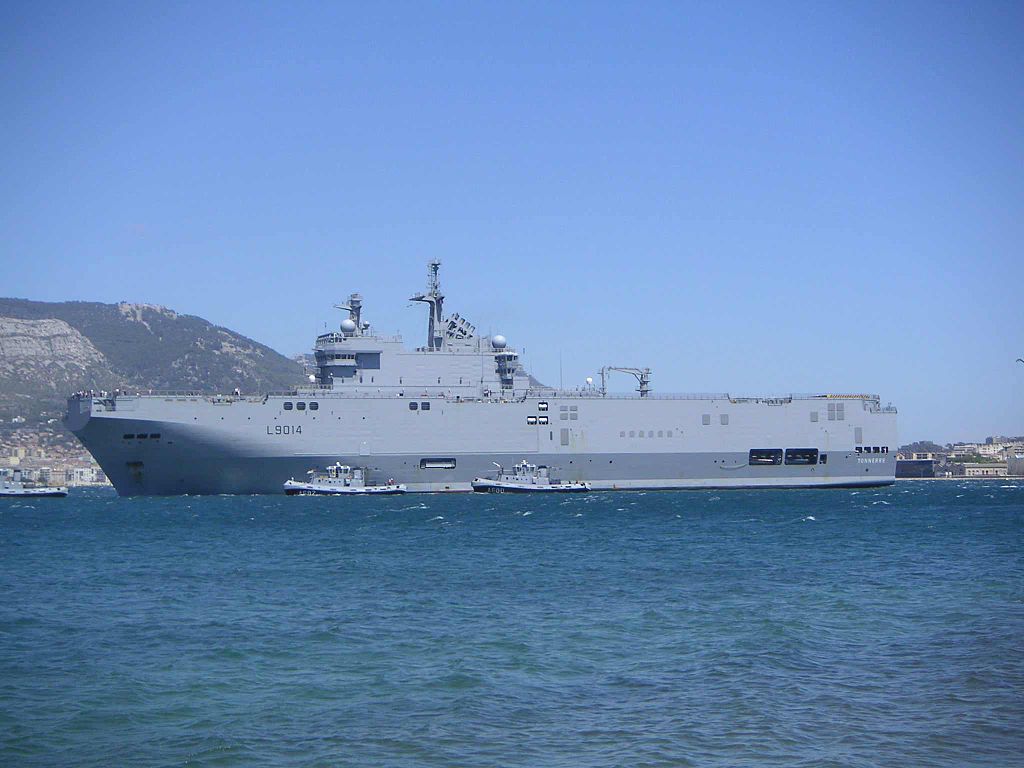
French helicopter carrier Tonnerre
The RFA (Royal Navy Auxiliary) Argus has already been deployed to the Middle East as a casualty recovery vessel. It can accommodate about 100 people.
The Chinese also have hospital ships. For example, there is Daishan Dao with 300 seats. Turkey also announced its readiness to send hospital ships.
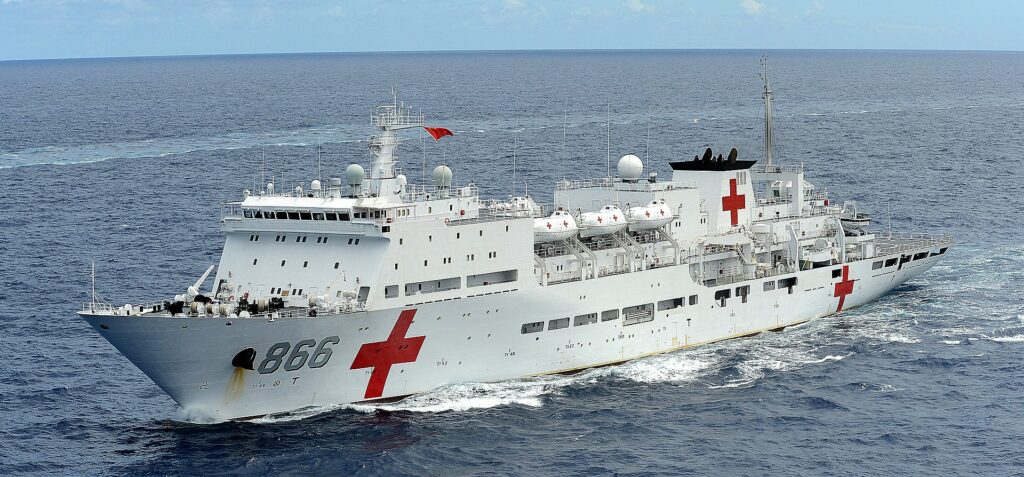
Chinese hospital ship Daishan Dao
The United States currently has the largest capacity, with USNS Mercy and Comfort each offering 1,000 patient beds and fully equipped to provide care. However, the USA is not yet sending its floating hospitals to Gaza — probably to avoid a covert confrontation with Israel. In addition, Mercy is currently in the Pacific with a minimal crew, while Comfort is being refitted at a shipyard in the States. Sending these ships to Gaza requires, in particular, the mobilization of both military reservists and civilian medical volunteers.
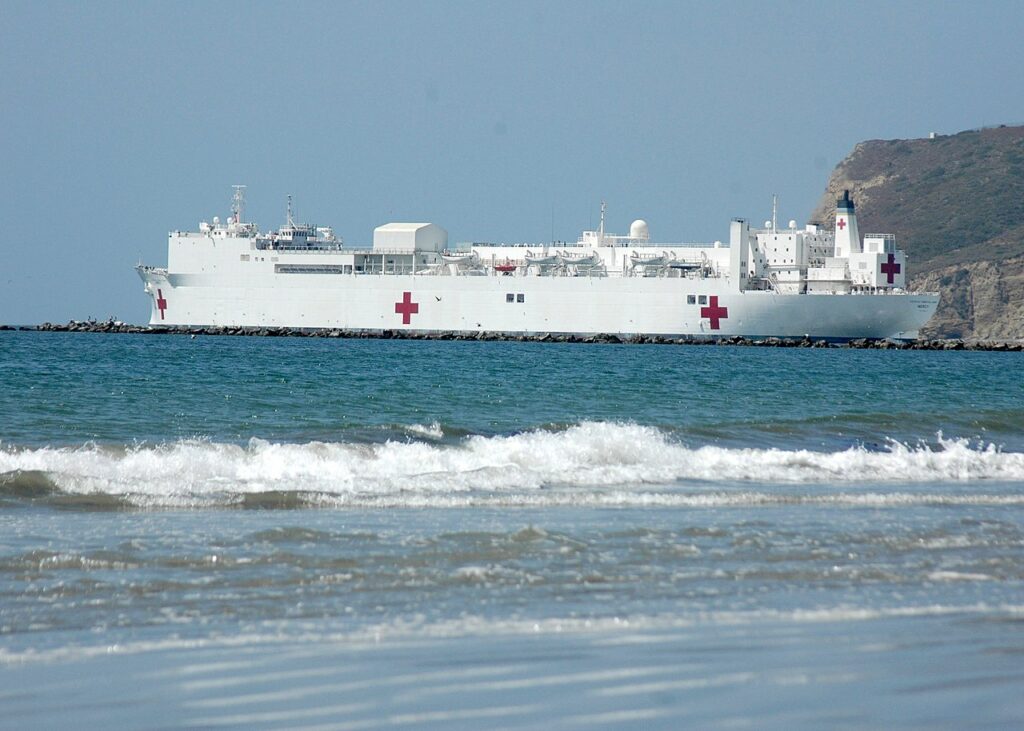
American hospital ship USNS Mercy
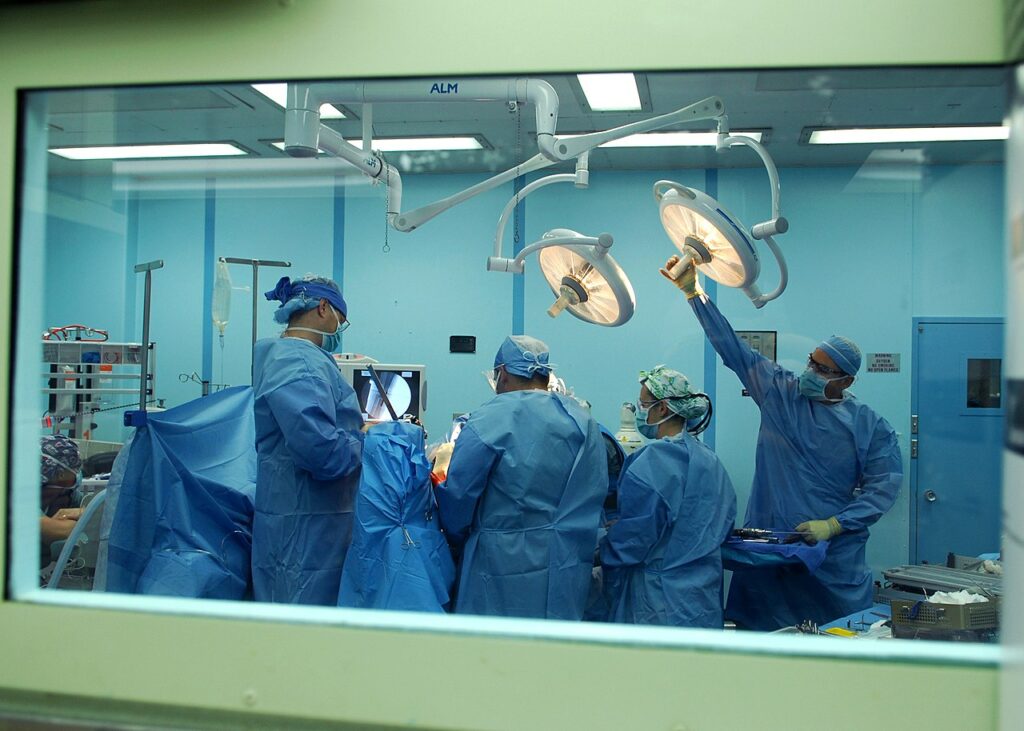
Operation on the ship USNS Mercy
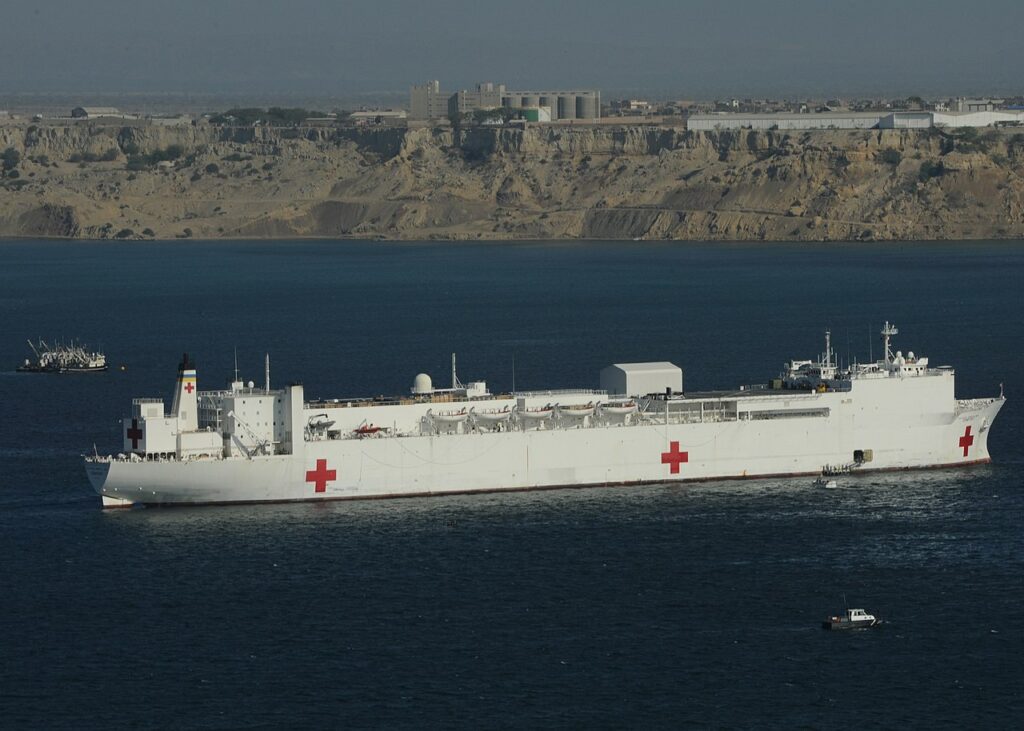
USNS Comfort
Hospital ships and Ukraine
Ukraine is a maritime state and has large seaports at its disposal. Access to the Sea of Azov is temporarily blocked for us due to the Russian occupation, but the ports on the Black Sea remain. It is not surprising if someone has a question: “Why does Ukraine not have hospital ships that would be based in Chornomorsk, Odesa or Pivdenne?”
Answer: because we simply do not need such vessels. The military and hospital fleets of superpowers, which have been fighting for dominance in the oceans for dozens of years in one way or another, are scattered around the world. Therefore, floating hospitals are needed, for example, by the crews of the US and Chinese ships, which are in the Pacific Ocean and the Atlantic Ocean for a long time, and in the event of an emergency situation, they will not have the opportunity to quickly reach the shore and consult a doctor. However, large ships have their own medical offices, as USM noted at the beginning of the article.
We should also note that Russia, which is using the Black Sea Fleet in the war with Ukraine, keeps its hospital ship “Enisey” in Sevastopol. Probably, a similar hospital ship would be needed by our troops in the south, but there are already issues of passage, the cost of providing a floating hospital, as well as guaranteeing the safety of its crew and patients, because Russia continues to mine the waters of the Black Sea and shell the coastal areas.
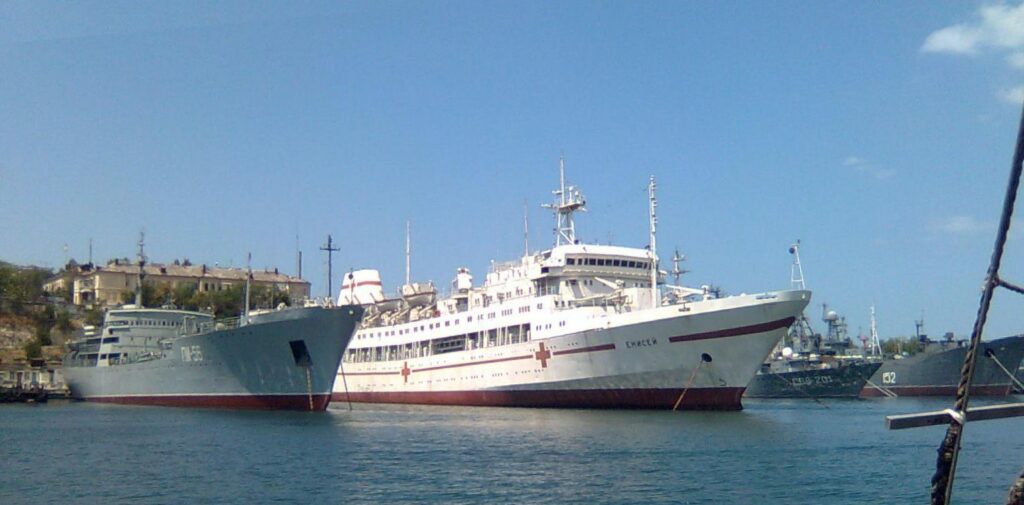
Russian hospital ship “Enisey” in Sevastopol, 2010
The fighting is taking place on the territory of Ukraine, but, unlike Gaza, the borders with other countries are not blocked (except for the periodic unjustified strikes of European carriers). We have the opportunity to treat our civilians and military personnel in the rear, or to send them for rehabilitation at the border. Therefore, the use of hospital ships, which require huge resources, both material and human, is simply impractical. We do not have our own similar ships, so the question remains open: would Turkey allow such ships from European partners through the Bosphorus, within the limits of the Montreux Convention? Even to Gaza, for the most part, not “traditional” unarmed hospital ships marked with white and red crosses are sent, but warships with medical equipment on board. And Turkey simply will not miss such vessels.
Therefore, Ukraine is now focused on the restoration of the military fleet. The Armed Forces have shown that they are capable of effectively destroying the Russians, moving to Crimea on boats or sending Russians “gifts” in the form of kamikaze naval drones. However, own full-fledged military fleet is the soil and base for any maritime state. And we will talk about how Ukraine is preparing to receive new ships later.
